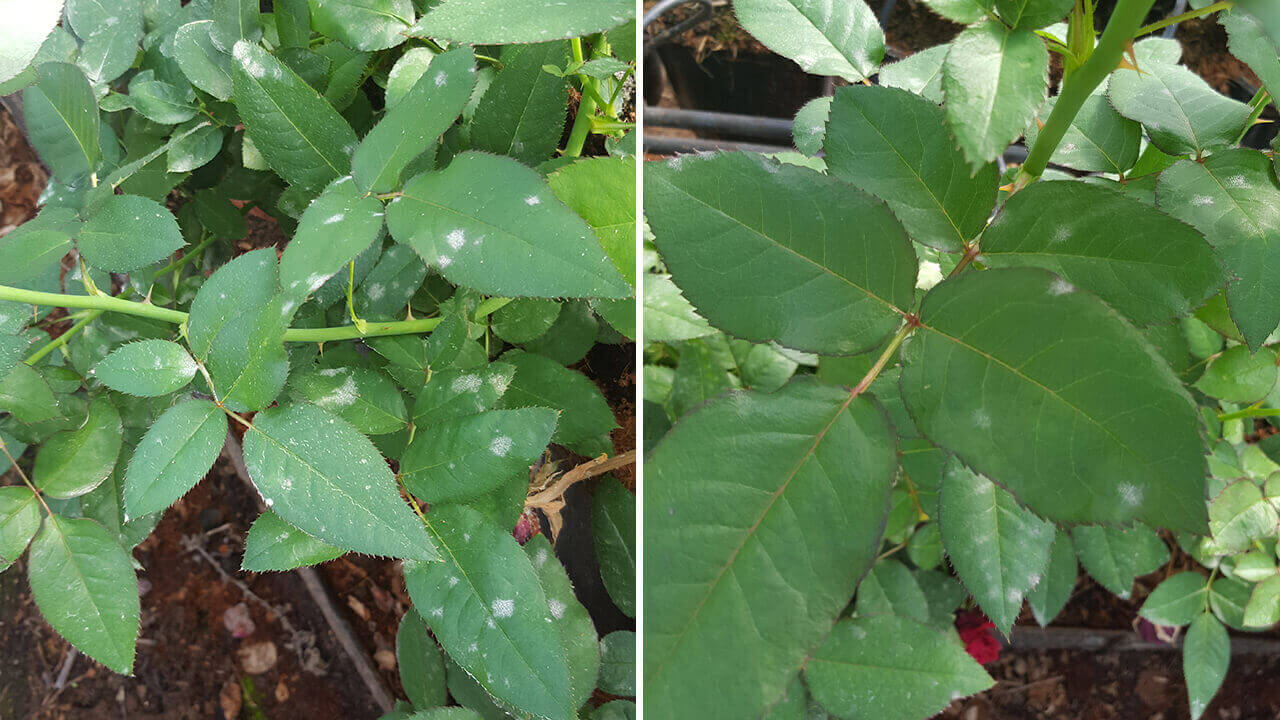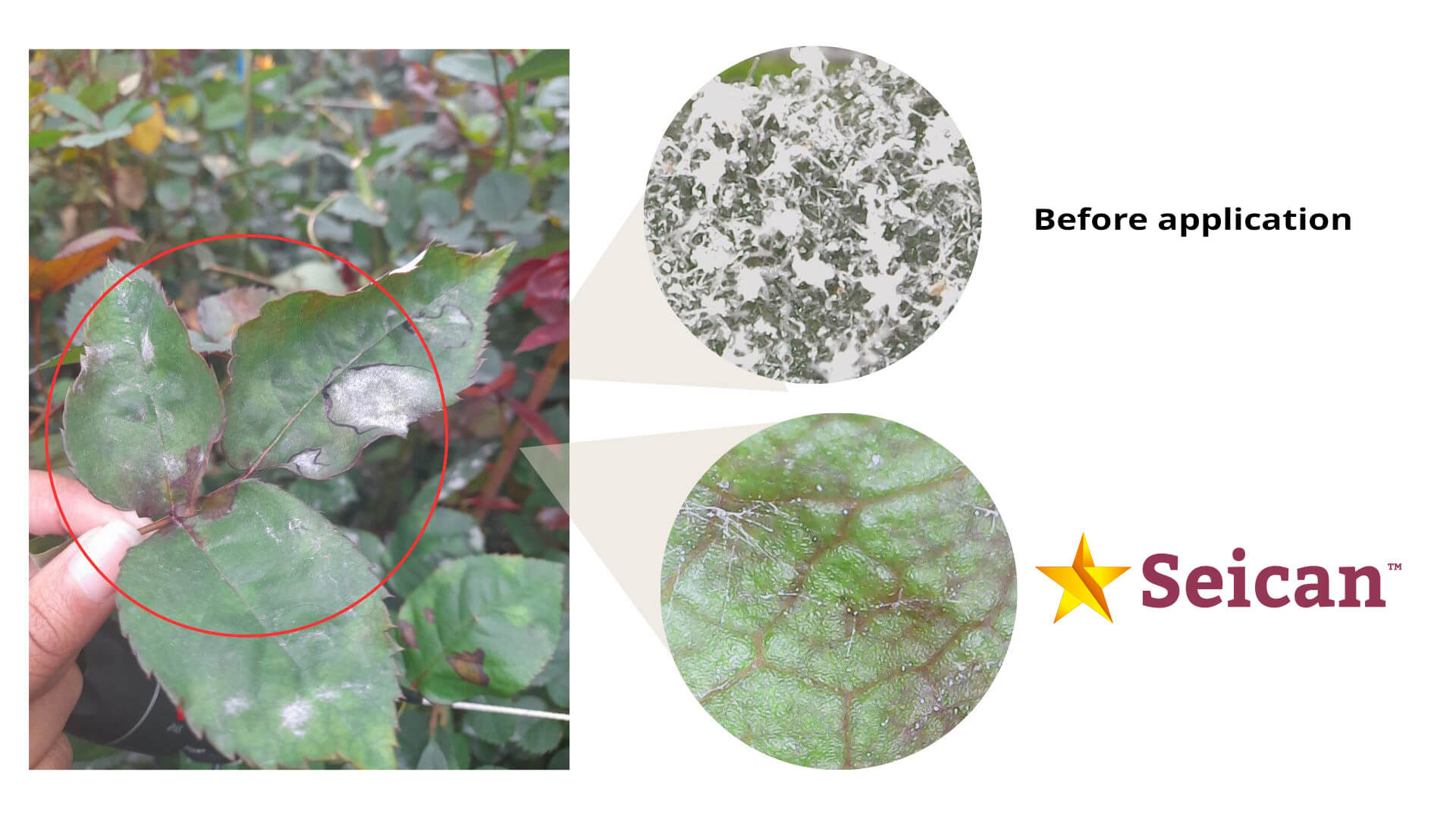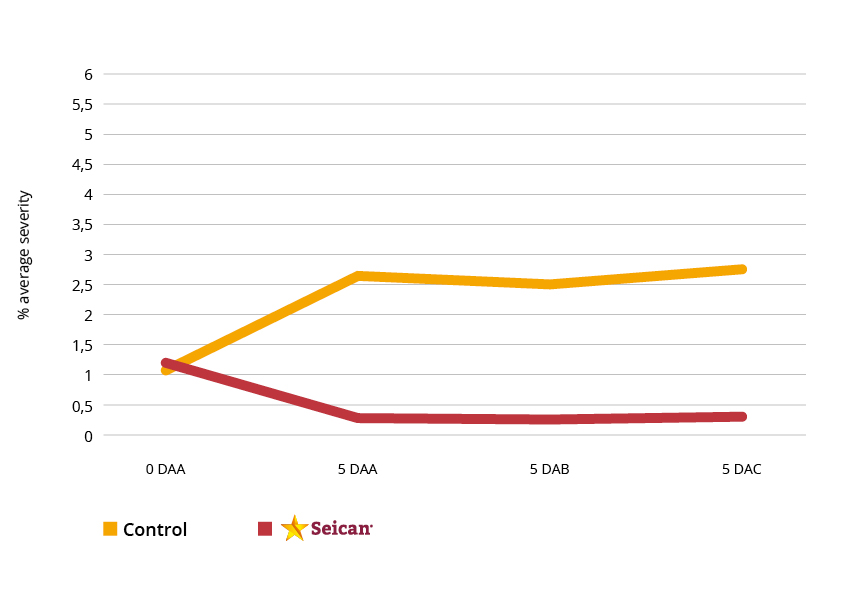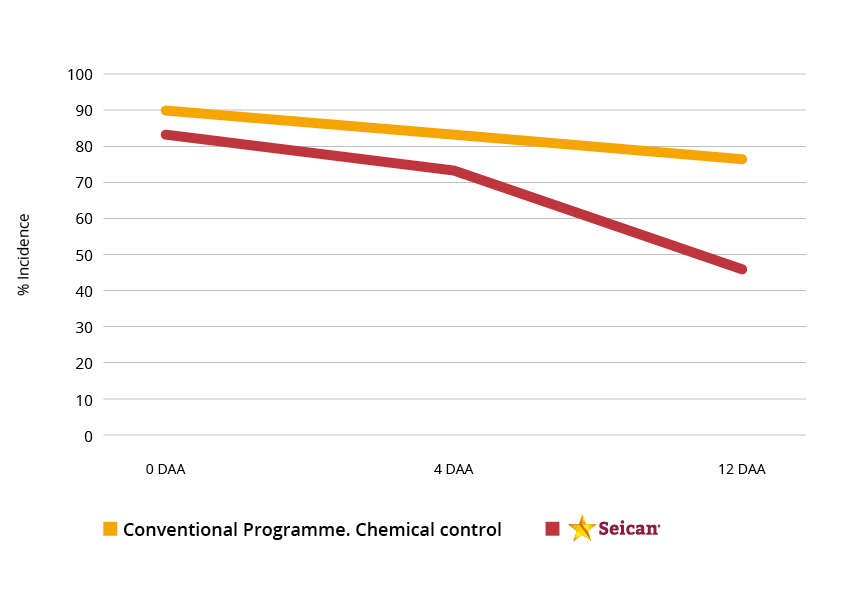Powdery mildew in roses: disease prevention and control

Powdery mildew spots on rose leaves
The rose is one of the most beautiful flowers we can grow, but it is also a very tempting target for pathogens. Powdery mildew is one of the most common and damaging diseases of roses. Prevention and, more importantly, control, are essential because powdery mildew reduces the photosynthetic capacity of the plant and therefore seriously affects its performance and vitality.
The most important thing to learn about this disease is to identify the conditions that favour its development. Powdery mildew on roses develops in warm, humid and generally poorly ventilated conditions. Spring and autumn are particularly susceptible seasons as hot days with high humidity and cool nights are common.
Care should also be taken with rose bushes in shady areas, where the fungus is able to establish itself more easily.
The symptoms of powdery mildew on roses (also known as ‘white powder’) are fairly easy to recognise. Infection begins with whitish or greyish spots on young leaves and stems, which then spread to the rest of the plant. Leaves curl up and, in the most severe cases, the infection can prevent normal plant development and cause considerable economic loss.
As mentioned in the introduction, powdery mildew grows on the leaves of the plant, preventing photosynthesis and seriously affecting yields. If the disease is not controlled in time, the damage to crop production can be considerable, as the spores are easily dispersed by the wind and reach a large number of plants.
How to get rid of powdery mildew on roses: biocontrol strategies
When the infection appears, you should to act immediately with corrective treatments. Seipasa recommends the use of Seican, a biocontrol product developed from cinnamic aldehyde and an exclusive formulation that provides a rapid and powerful shock effect to stop the progress of powdery mildew on rose bushes.
Seican has a curative and eradicant effect, inhibiting fungal growth, preventing the penetration and colonisation of mycelia and spores, and allowing the fungus to be controlled at the invasion stage.
Graph 1 shows the evolution of disease severity and corresponds to an efficacy trial of Seican developed in Ecuador to evaluate the efficacy of the product in controlling powdery mildew in roses. As the results show, treatment with Seican reduces the severity of the decrease. As applications are increased, absolute control of the disease is evident.
In this case, a % severity scale from 1 to 6 has been used, which is directly related to the % of infection of the leaf area: grade 1 indicates the absence of infection, while grade 6 indicates that the infected area is greater than 50%.
Graph 1. Average severity percentage. Powdery mildew control in roses.
Improved chemical reference results
Graph 2, in this case from an efficacy trial developed in Colombia, measures the evolution of disease incidence. The findings show Seican’s ability to reduce incidence by half from the first application. Seican also outperforms the conventional programme, which included two chemical control references commonly used by growers to control powdery mildew in roses.
Graph 2. Evolution of the disease incidence. Control of powdery mildew in roses.
Seican offers growers great reliability and flexibility due to it has no preharvest interval: it leaves no residue on the crop and can be applied immediately before harvest, without having to wait hours or days for the product to degrade. In addition, it does not produce any kind of phytotoxicity.

Powdery mildew on rose leaves. Before and after Seican application.
In addition to biological control, the fight against powdery mildew on roses recommends the use of a number of practices or measures that can have a very significant impact on the final result. To generate natural ventilation currents between the roses, it is important not to plant them too close together and to ensure that they have enough space between them. To the extent possible, avoid sprinkler irrigation, ensure a minimum number of hours of sunshine per day and generate a soil that is as rich as possible in organic matter.



